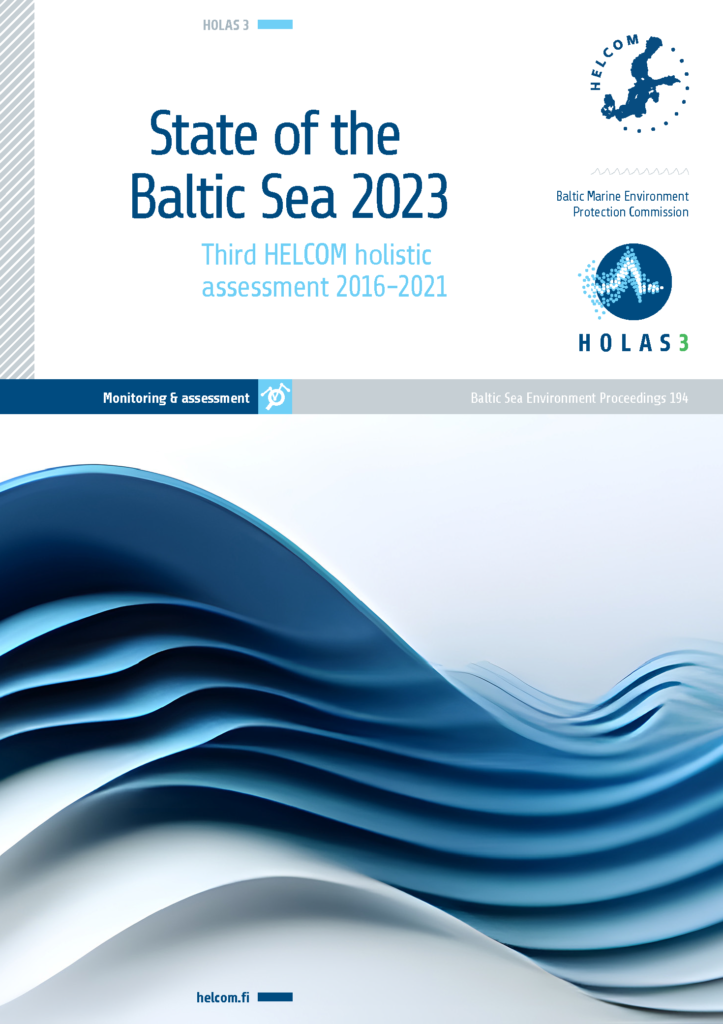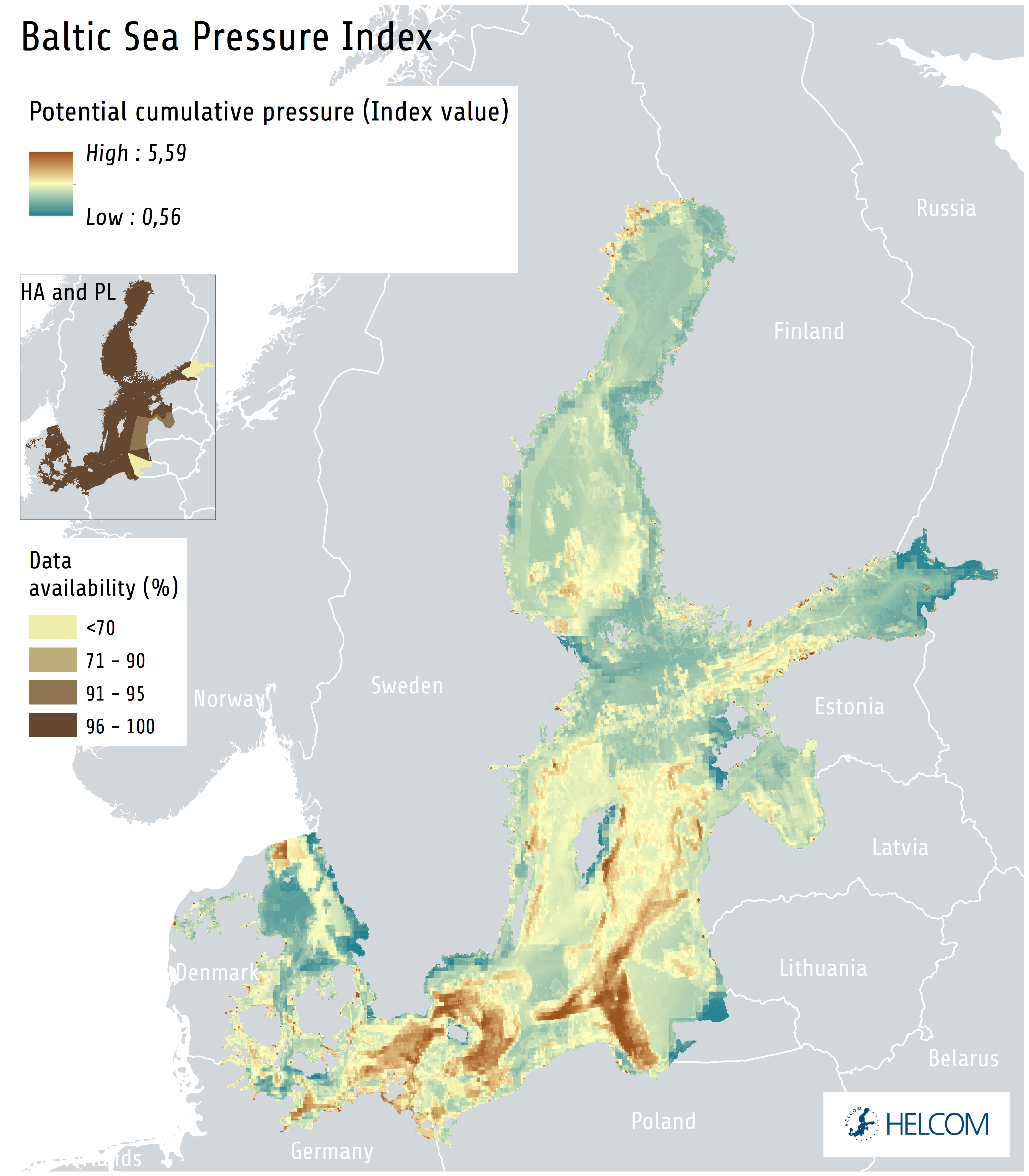PRESSURE AND IMPACT INDICES
Spatial analyses of pressures and impacts
The SPIA tool used to assess the spatial distribution of pressures and impacts is highly versatile and can analyse any combination of pressures and ecosystem components to provide information about both the potential distribution and the potential impact. By combining all available information on pressures and impacts, the tool can also address the cumulative burden on the environment caused by human activities in the Baltic Sea region. The results are presented as two indices.
- The Baltic Sea Pressure Index gives information about which areas are likely to have the greatest pressure from human
- The Baltic Sea Impact Index shows the distribution of the potential cumulative impact of these pressures on the environment.
This is accomplished by considering the spatial distribution of species and habitats, as well as how sensitive these ecosystem components are to the different pressures.
The Baltic Sea Pressure and Impact indices for the years 2016- 2021 are based on nationally reported spatial data sets for 28 human activities occurring in the Baltic Sea and 6 data sets of pressures estimated by direct measurements at sea. These data were compiled into 17 aggregated pressure layers which were used in the assessment. In addition, 57 spatial data sets representing different ecosystem components were included in the assessment. The thematic assessment report (HELCOM 2023e) gives a detailed description of the method and a complete account of all data layers, their sources and how they were developed.
Figure 5.1. The Baltic Sea Pressure Index shows the spatial variation in the potential cumulative pressure on the Baltic Sea by combining data on several pressures. The index is based on the currently best available regional data, but spatial gaps may occur in some underlying data sets. The inset data availability map shows data availability for human activities (HA) and pressures (PL). Source: HELCOM 2023e.

State of the Baltic Sea 2023 — The third HELCOM holistic assessment (HOLAS 3)
State of the Baltic Sea 2023 is a synthesis report that builds on, and integrates, results from a wide range of assessment products produced within the third HELCOM holistic assessment. Its role is to link information from the underpinning assessment products together, thus highlighting the holistic aspects. With this in mind, the summary report focuses on presenting the results and on an in-depth look at why we are seeing these results, providing over-arching context and analysis. The report helps develop a clearer picture of where we are and how things are connected, supporting coordinated and effective measures to strengthen the Baltic Sea environment.


